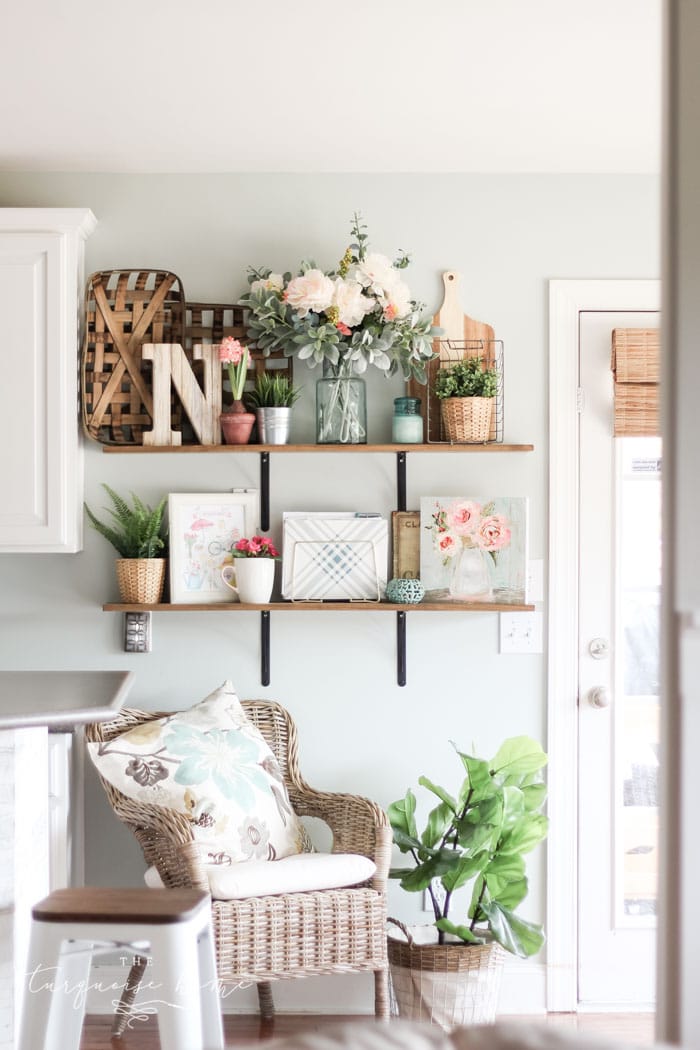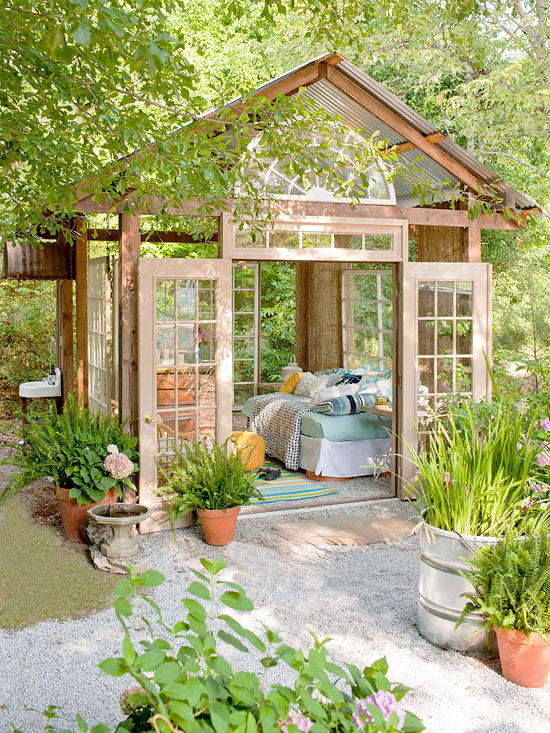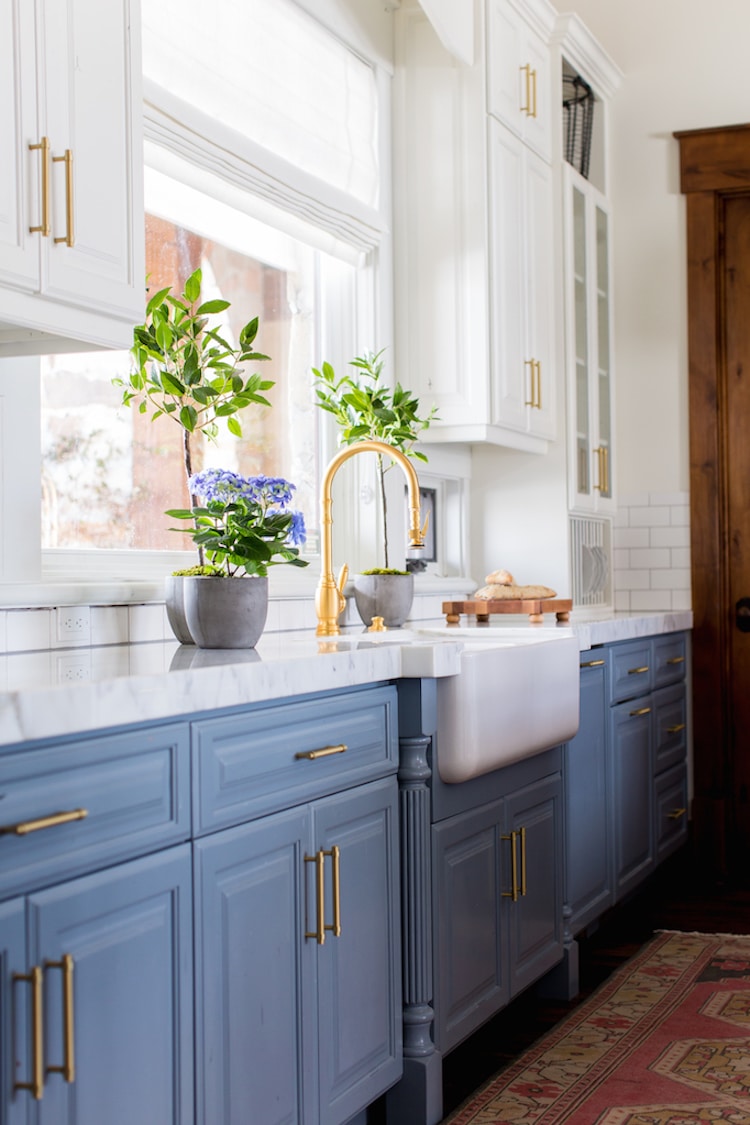Pothos Plant Care Guide
Among my top three easy-care houseplants, I have to say pothos plants have my heart. Maybe it’s their trailing vines of heart-shaped leaves? Here’s everything you need to know to successfully grow this beautiful houseplant in your own home.
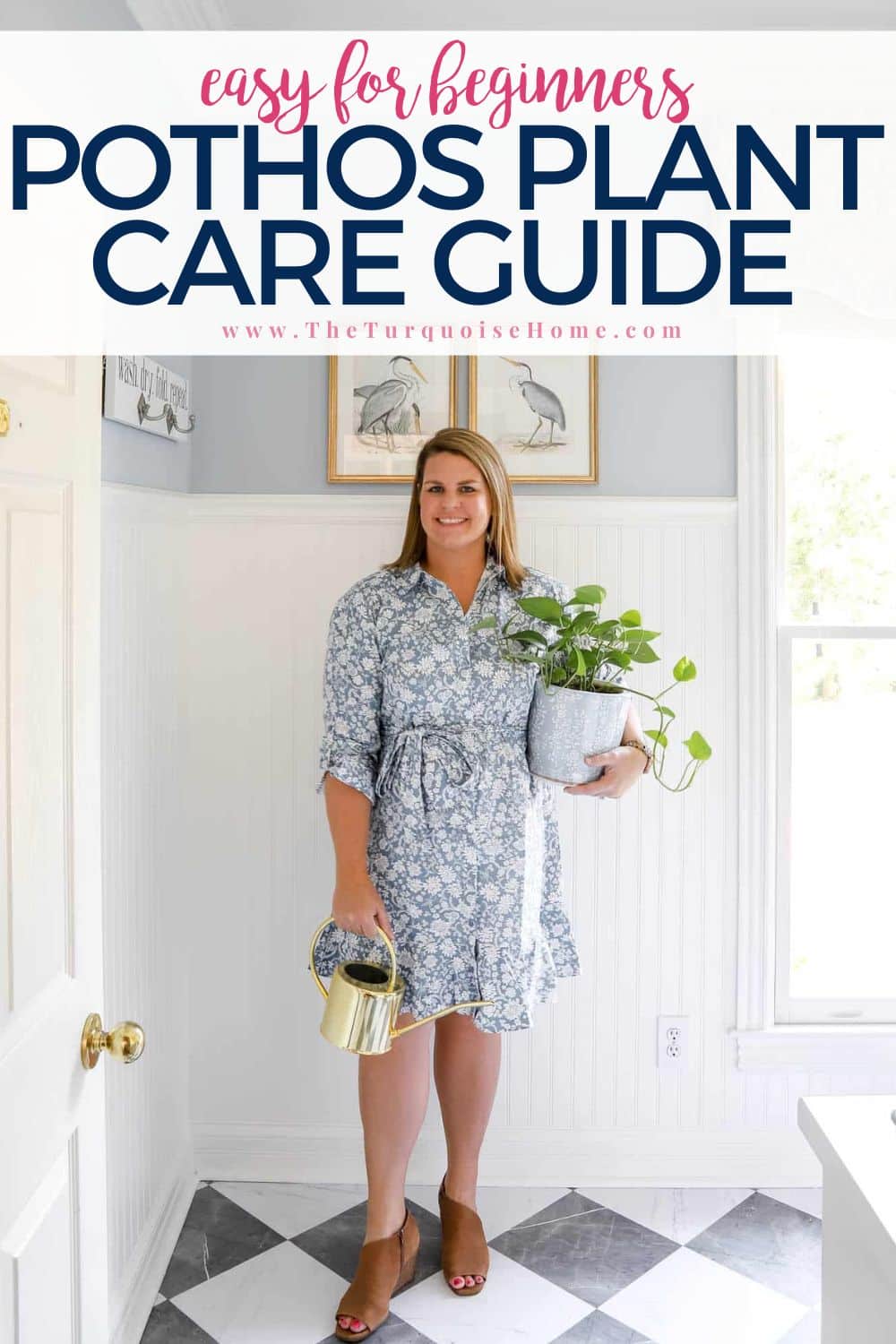
A Marble Queen pothos was the second plant I ever bought with the hopes of keeping it alive and learning to have a green thumb. (My first was the ZZ plant.) And to my surprise, I’ve not only kept it alive, but I’ve propagated it for other rooms in my house and given them away as gifts. I love it so much!
The plant I’m holding in the above photo was propagated from my original plant (see it below) and set in my newly made-over laundry room. It adds a ton of life and beauty to the corner of my laundry room. Let’s dive in on this wonderfully easy-to-care-for plant that I love.
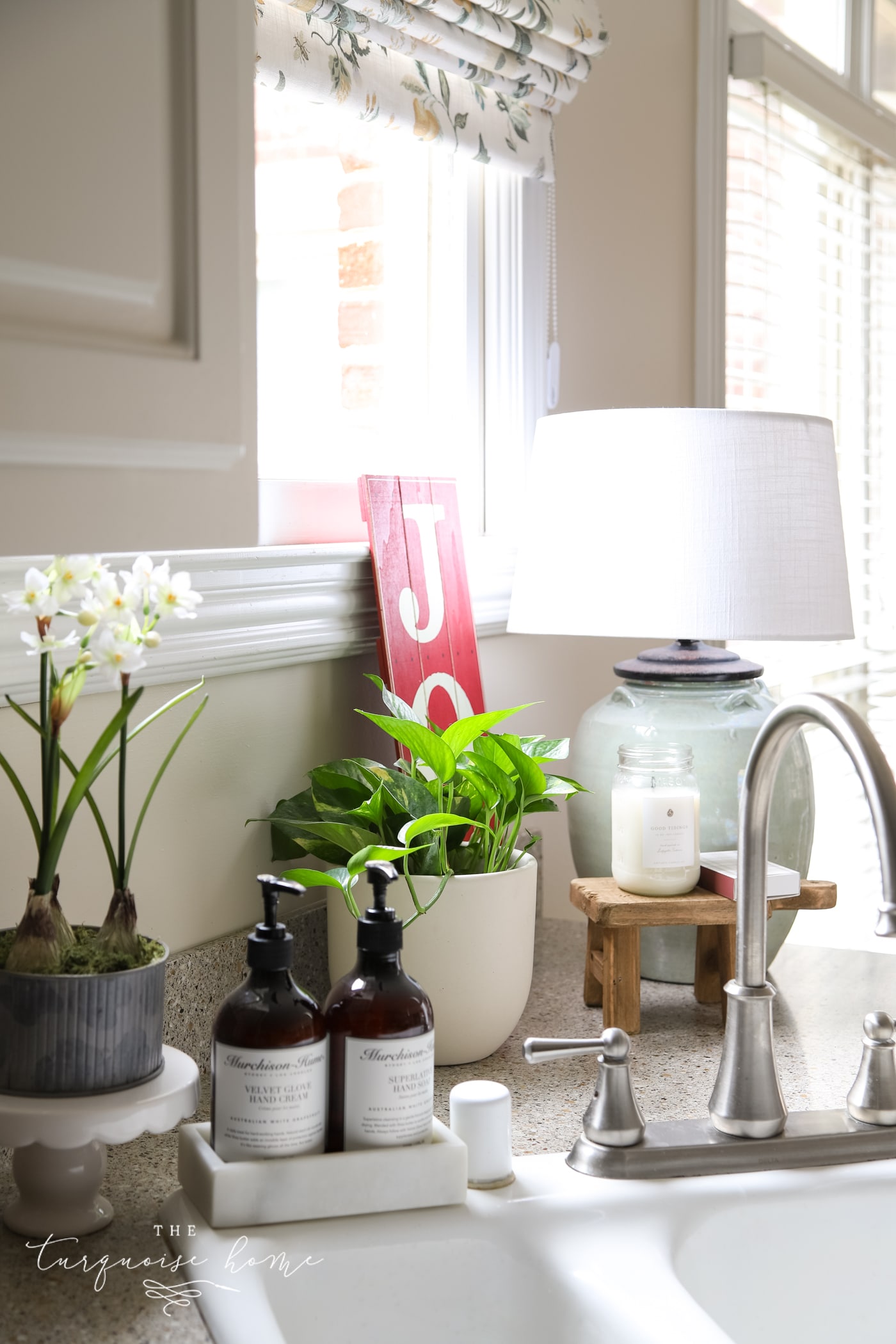
This post contains affiliate links for your convenience. See my full disclosure policy.

Want to Save This?
Enter your email below and I’ll send it directly to your inbox!
Names of Pothos Plant
Pothos plants, scientifically known as Epipremnum aureum, are so popular for good reason. Also known as devil’s ivy, hunter’s robe, or silver vine, these hardy plants brighten up every space and are so easy to care for.
Benefits of Pothos Plants
- Beautiful: Lush green foliage and cascading vines make pothos plants add a dramatic touch of natural beauty to any room.
- Easy: If you’re a beginner to indoor gardening or just busy in general, pothos plants are incredibly low-maintenance and therefore more “forgiving” than most when you miss watering.
- Purifying: Like many houseplants, pothos plants are natural air purifiers allowing you to breathe easier, absorbing harmful chemicals like formaldehyde, benzene, and carbon monoxide.
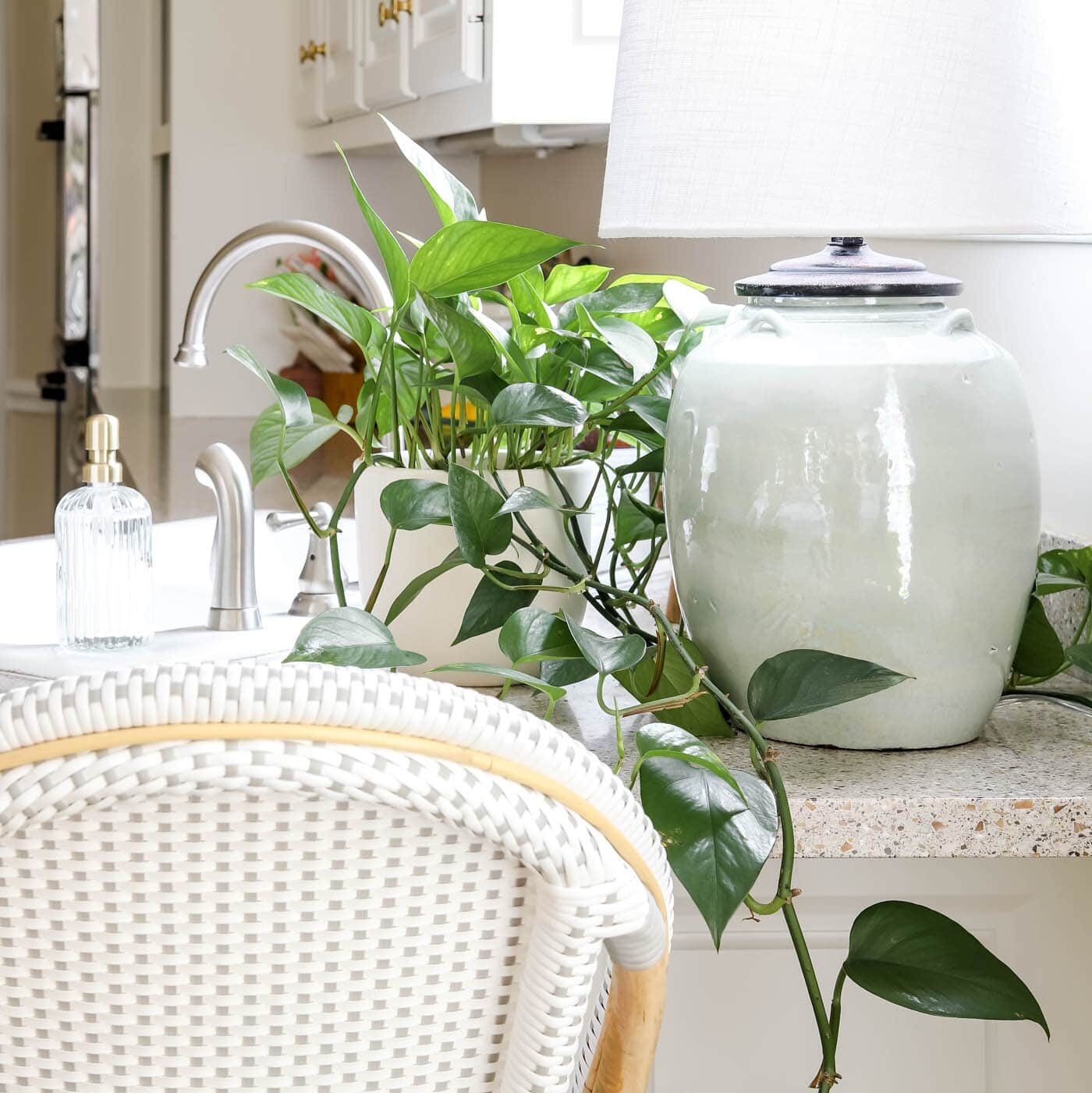
Varieties of Pothos Plants
Once you learn about the many different types of pothos plants, you probably won’t want to stop with just one. Take advantage of their distinct features to mix and match a green scape in a sunny corner using a mix of plant stands and shelves.
- Golden pothos: This one is the most common and has glossy green leaves with golden-yellow variegation.
- Marble Queen pothos: This pothos has dark green leaves and creamy white variegation.
- Neon pothos: True to its name, this plant has distinctly bright yellow leaves for a noticeable pop of color anywhere you place it.
- Jade pothos: Dark green, glossy leaves with no variegation set these pothos apart.
- Pearls and jade pothos: This one has dark green glossy leaves with creamy white and light green spots.
- Manjula pothos: This plant has white and cream variegation like the marble queen, yet with much larger leaves.
- N’Joy pothos: Bold white variegation on green leaves that are smaller than average gives this pothos a lush, compact look.
- Cebu blue pothos: This one is harder to find and has blue-green, narrow leaves.
- Hawaiian pothos: The large, glossy leaves of these pothos have golden-yellow variegation.
- Jessenia pothos: Similar to the marble queen pothos in the look of the leaf variegation, it differs in that they do not contain white hues, just chartreuse and yellow.

How to Propagate Pothos Plants
Now you have a sampling of some of the many varieties of these plants, you’ll be happy to learn they’re easy to propagate, so you can compare and share with friends.
Here are the simple steps to follow for using the water propagation method on a pothos plant cutting:
- Choose a 4-to 6-inch vine with at least four leaves from a healthy plant with mature vines and leaves.
- Cut the vine about an inch below a root node with a clean, sharp pair of scissors or pruning shears. Remove the leave(s) closest to that root node to encourage root growth.
- Submerge the root node into a glass container of water. Choose a spot to place it that’s in bright, indirect sunlight. Direct sunlight is too harsh.
- Change the water every few days to prevent any bacteria growth. Watch for roots to develop within two to three weeks.
- Transfer the cutting to a small pot filled with well-draining soil.
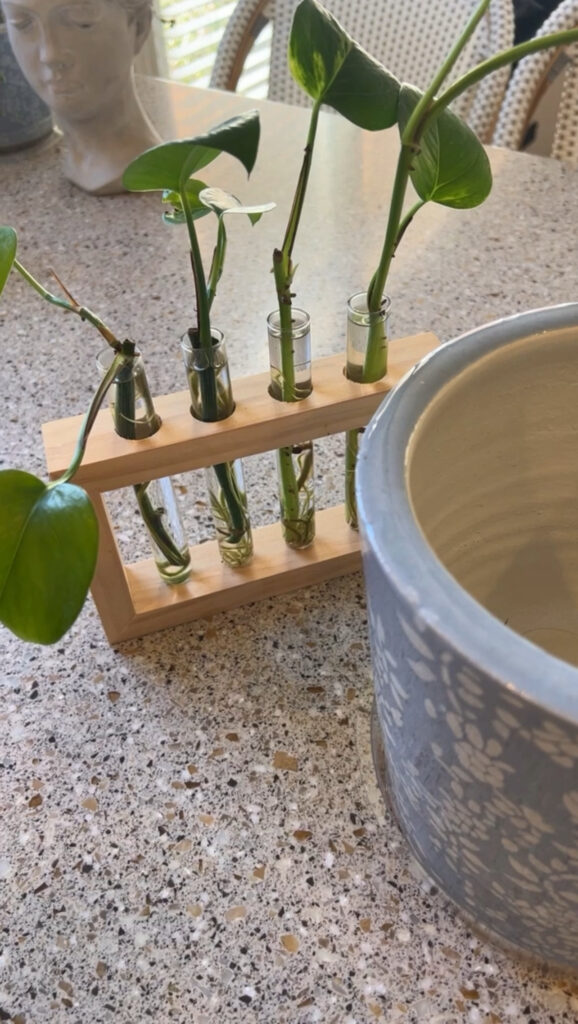
I have propagated my pothos plant several times and given them as gifts or kept them for myself. I love my little propagation station for making more plant babies!
How to Care for Pothos Plants
From when to water to where to place them, here are all the plant care tips you need to keep your pothos plant beautiful.
Pothos Plant Light Requirements
Pothos plants thrive best in bright, indirect light. Direct sunlight is too much and can scorch their leaves! They also can adapt to low light conditions, so they’re perfect just about everywhere but the blazing sun.
Are Pothos Plants Safe for Pets?
No. The stems and leaves contain calcium oxalate crystals that are toxic to pets and people, causing considerable sickness. Keep their posts and trailing (or climbing) tendrils far out of reach of your little people and pets.
How many times a week should you water a pothos plant?
Water pothos plants only when the top inch of soil is dry (or two!). Do not overwater pothos, which can cause root rot and other issues. If unsure if it needs watering, get a moisture meter!
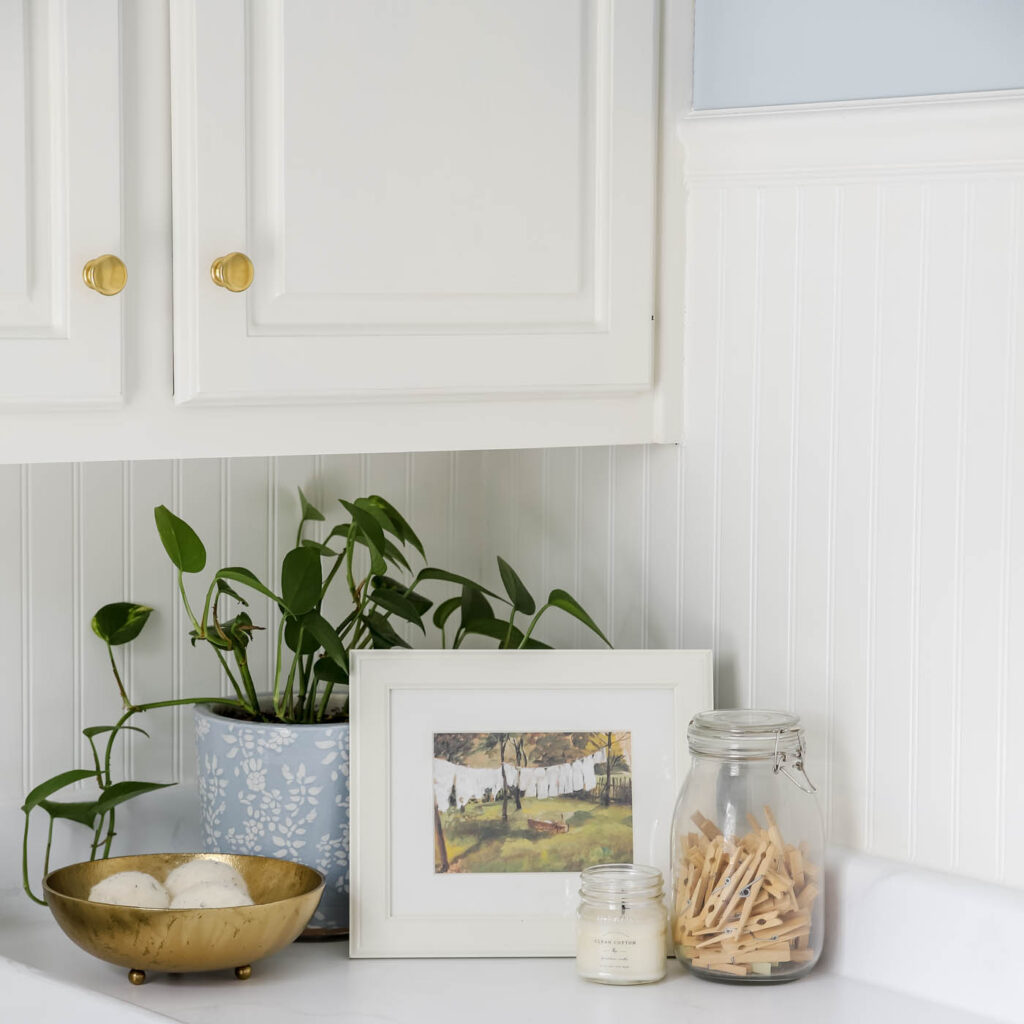
What size pot do I need for my pothos plant?
The best pot for your pothos is one with drainage holes and about two times the size of the plant’s root ball. Too large a pot can lead to overwatering, so be mindful to pick the perfect pot.
When should I repot my pothos plant?
Pothos plants usually need to be repotted every 12 to 18 months. Repotting pothos should be done in the spring and summer growing season. Just choose a container one size up from the old one and repot with fresh, well-draining soil you know your pothos loves.
You can inspect your plant’s roots to see if it’s rootbound, in which case you may need to expedite repotting. Remove the plant and check to see if there’s a dense mass of roots encircling the root ball. If that’s a yes, repotting will allow the roots more space to expand as they should. Always break up the root ball with your hands before repotting.
If you’re plant seems to have stopped growing and it’s not because of needing more light or nutrients, it may just need a bigger pot for growth. Last, if the soil suddenly seems to be drying out too quickly between waterings, that’s another sign it may need a bigger pot with a little more soil to trap the moisture it needs.
What type of soil does my pothos plant need?
Pothos plants need a well-draining potting mix, which you can create easily with potting soil, perlite, and orchid bark.
What temperature and humidity work best for a pothos plant?
The best average room temperatures for pothos plants are between 65-80°F (18-27°C). These plants also do best in moderate to high humidity but can adapt to lower levels. Misting the plant or using a humidifier can help maintain ideal humidity levels in dry air. They are also great plants to keep in powder rooms or in the kitchen near the sink (one of my favorite arrangements).
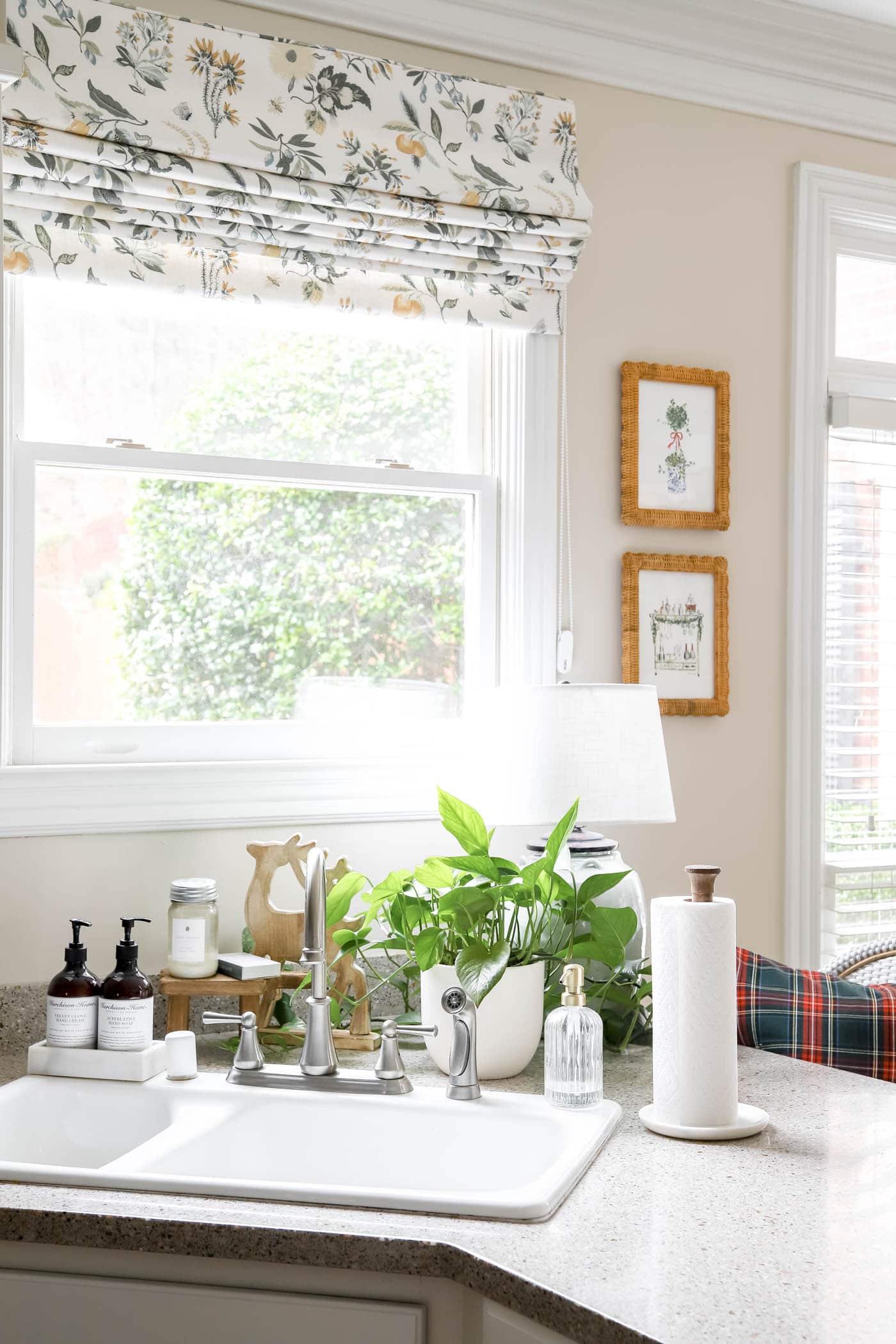
Possible Pothos Plant Problems and What to Do
While these hardy houseplants are known for their easy care, they may need your attention every now and then. Here are a few signs of possible issues and how to solve them if you see them,
If your pothos plant is:
- Browning: Not enough humidity or underwatering can cause browning on pothos plants’ leaf tips. If you are watering adequately, increase the humidity with a mister. If that doesn’t work, seek out a more naturally humid space in your home.
- Yellowing: Almost always, yellowing leaves if from overwatering. Let the soil dry out completely between waterings and take note to adjust your schedule moving forward. Too much water over time can cause root rot, which can kill your plant. If you suspect root rot, remove the plant from the pot and inspect it. Carefully trim any rotten roots if you find them. Then repot your plant in fresh, well-draining soil.
- Not growing or growing super slow: Too low light or lack of nutrients (or both) can cause your plant to stop growing or to a point so slow it seems it has stopped. Try moving the plant to brighter (still indirect) lighting and add fertilizer when you water it during the spring and summer growing seasons.
Essential Houseplant Accessories
Last, here are a few of my favorite accessories and supplies for houseplant care:
- Miracle-Gro Liquid Fertilizer
- Self-watering planters … just in case you forget to water each week.
- Bamboo Plant Shelf for the perfectly lit space in your home.
- Soil moisture, light, pH tester is the ideal tool for getting your light and soil conditions just right.
Let me know in the comments if you have other questions about these pothos basics. I will reply as soon as I can!
More Posts You Will Love:


